Influence of Ambient Air Pollution on Glutathione-S-Transferase Polymorphism Genes-Meta-Analysis
Sagbo H Firmin1, Lawin Herve2, Anago AA Eugénie3, Menonve Atindehou1, Cachon F Boris4, Sanni Ambaliou1, Ayi-Fanou Lucie1*
1Unit of Biochemistry and Molecular Biology, Laboratory of Biochemistry, Molecular Biology and Environment, Faculty of Sciences and Technologies, University of Abomey-Calavi (UAC), Cotonou, Benin
2EcoHealth Chair, Faculty of Health Sciences, University of Abomey-Calavi (UAC), Cotonou, Benin
3Laboratory of Research in Applied Biology (LARBA), Polytechnic School of Abomey-Calavi, University of Abomey-Calavi, Cotonou, Benin
4Faculty of Science and Technology of Dassa-Zoume, University of Sciences, Technology, Engineering and Mathematics, Dassa-Zoume, Benin
*Corresponding Author: Ayi-Fanou Lucie, Unit of Biochemistry and Molecular Biology, Laboratory of Biochemistry, Molecular Biology and Environment, FAST/UAC, Cotonou 04 BP 0320, Benin
Received: 26 August 2019; Accepted: 09 September 2019; Published: 20 September 2019
Article Information
Citation: Sagbo HF, Lawin H, Anago AAE, Atindehou M, Cachon FB, Sanni A, AYI-FANOU L. Influence of Ambient Air Pollution on Glutathione-S-Transferase Polymorphism Genes-Meta-Analysis. Journal of Environmental Science and Public Health 3 (2019): 450-460.
View / Download Pdf Share at FacebookAbstract
Background: Glutathione-S-Transferase (GST) plays an important role in the detoxication mechanism of our organism but the homozygous deletion of these genes leads to the reduction or suppression of its activity. The aim of this meta-analysis is to evaluate the effect of pollution on GSTM1 and GSTT1 polymorphisms.
Methods: Ten publications out of two thousand six hundred fifty nine were consulted using PubMed, Google Scholar, Ovid and the European Journal of Medical Research which related to this topic. All abstracts and publications have been taken into account without restriction of languages. The t-test was used to compare the data of the selected articles.
Results: The overall analysis of the data shows that the null GSTM1 and GSTT1 genotype was observed at a higher frequency in the exposed subjects compared to control. Two studies reported that pollution has very significant effects on GSTM1 and GSTT1 but the others studies have shown no significant difference.
Conclusion: Ambient air pollution has a negative impact on the expression of GST polymorphism as the deletion which could depend of type of pollutants and population. It would be interesting to conduct others studies to improve our knowledge in individual susceptibility according to the type of population and pollutants.
Keywords
Air pollutants, Glutathione-S-transferase, Polymorphism, Detoxication, Deletion
Air pollutants articles, Glutathione-S-transferase articles, Polymorphism articles, Detoxication articles, Deletion articles
Air pollutants articles Air pollutants Research articles Air pollutants review articles Air pollutants PubMed articles Air pollutants PubMed Central articles Air pollutants 2023 articles Air pollutants 2024 articles Air pollutants Scopus articles Air pollutants impact factor journals Air pollutants Scopus journals Air pollutants PubMed journals Air pollutants medical journals Air pollutants free journals Air pollutants best journals Air pollutants top journals Air pollutants free medical journals Air pollutants famous journals Air pollutants Google Scholar indexed journals Glutathione-S-transferase articles Glutathione-S-transferase Research articles Glutathione-S-transferase review articles Glutathione-S-transferase PubMed articles Glutathione-S-transferase PubMed Central articles Glutathione-S-transferase 2023 articles Glutathione-S-transferase 2024 articles Glutathione-S-transferase Scopus articles Glutathione-S-transferase impact factor journals Glutathione-S-transferase Scopus journals Glutathione-S-transferase PubMed journals Glutathione-S-transferase medical journals Glutathione-S-transferase free journals Glutathione-S-transferase best journals Glutathione-S-transferase top journals Glutathione-S-transferase free medical journals Glutathione-S-transferase famous journals Glutathione-S-transferase Google Scholar indexed journals Polymorphism articles Polymorphism Research articles Polymorphism review articles Polymorphism PubMed articles Polymorphism PubMed Central articles Polymorphism 2023 articles Polymorphism 2024 articles Polymorphism Scopus articles Polymorphism impact factor journals Polymorphism Scopus journals Polymorphism PubMed journals Polymorphism medical journals Polymorphism free journals Polymorphism best journals Polymorphism top journals Polymorphism free medical journals Polymorphism famous journals Polymorphism Google Scholar indexed journals Detoxication articles Detoxication Research articles Detoxication review articles Detoxication PubMed articles Detoxication PubMed Central articles Detoxication 2023 articles Detoxication 2024 articles Detoxication Scopus articles Detoxication impact factor journals Detoxication Scopus journals Detoxication PubMed journals Detoxication medical journals Detoxication free journals Detoxication best journals Detoxication top journals Detoxication free medical journals Detoxication famous journals Detoxication Google Scholar indexed journals Deletion articles Deletion Research articles Deletion review articles Deletion PubMed articles Deletion PubMed Central articles Deletion 2023 articles Deletion 2024 articles Deletion Scopus articles Deletion impact factor journals Deletion Scopus journals Deletion PubMed journals Deletion medical journals Deletion free journals Deletion best journals Deletion top journals Deletion free medical journals Deletion famous journals Deletion Google Scholar indexed journals air pollution articles air pollution Research articles air pollution review articles air pollution PubMed articles air pollution PubMed Central articles air pollution 2023 articles air pollution 2024 articles air pollution Scopus articles air pollution impact factor journals air pollution Scopus journals air pollution PubMed journals air pollution medical journals air pollution free journals air pollution best journals air pollution top journals air pollution free medical journals air pollution famous journals air pollution Google Scholar indexed journals PRISMA articles PRISMA Research articles PRISMA review articles PRISMA PubMed articles PRISMA PubMed Central articles PRISMA 2023 articles PRISMA 2024 articles PRISMA Scopus articles PRISMA impact factor journals PRISMA Scopus journals PRISMA PubMed journals PRISMA medical journals PRISMA free journals PRISMA best journals PRISMA top journals PRISMA free medical journals PRISMA famous journals PRISMA Google Scholar indexed journals genotypes articles genotypes Research articles genotypes review articles genotypes PubMed articles genotypes PubMed Central articles genotypes 2023 articles genotypes 2024 articles genotypes Scopus articles genotypes impact factor journals genotypes Scopus journals genotypes PubMed journals genotypes medical journals genotypes free journals genotypes best journals genotypes top journals genotypes free medical journals genotypes famous journals genotypes Google Scholar indexed journals antioxidant articles antioxidant Research articles antioxidant review articles antioxidant PubMed articles antioxidant PubMed Central articles antioxidant 2023 articles antioxidant 2024 articles antioxidant Scopus articles antioxidant impact factor journals antioxidant Scopus journals antioxidant PubMed journals antioxidant medical journals antioxidant free journals antioxidant best journals antioxidant top journals antioxidant free medical journals antioxidant famous journals antioxidant Google Scholar indexed journals
Article Details
1. Introduction
All organisms are exposed daily to a wide variety of xenobiotics of various origins. Among these xenobiotics, we have air pollutants that continue to have adverse effects on population health [1, 2]. One of pollutant sources is road traffic [1, 3, 4]. Numerous studies have shown that low or moderate levels of pollutants can have both short- and long-term health consequences [5, 6]. The organism biotransformed these xenobiotics to compounds, that are either more toxic than the original compound or neutralized into less toxic compounds, that can be eliminated from the body by a complex multienzymatic system of Glutathion-S-Transferase (GST) [7]. However, these pollutants may affect the activity of these enzymes by causing their mutations. Currently, it is established that the metabolite pollutants influence individual genetic susceptibility in exposed subjects who can develop some pathologies as cancers, cardiovascular, pulmonary and inflammatory diseases [4, 8].
The xenobiotics are hydrophobic compounds which can be taken in charge in the organism by the enzymes of phase I as cytochrome P450. The cytochromic P450 enzymatic system promotes the water solubility of these hydrophobic substances and biotransformed them in alcohols, phenol, amines etc. The transformed toxins can produce free radicals themselves neutralized by a good antioxidant such as glutathione, the most important antioxidant in the liver [9]. Glutathione-S-transferases (GST), enzymes of phase II belong to enzymes families which constitute an important line of defense protecting some cellular components (DNA, lipids and proteins) from the deleterious effects induced by these compounds [10-12]. There are several classes of GST enzymes: alpha (A), kappa (K), mu (M), omega (O), pi (P), sigma (S), theta (T) and zeta (Z) [13, 14].
Each class of GST exists in several subclasses or isoenzymes. The most studied are those of the GSTM1, GSTT1 and GSTP1 subclass [2, 15]. Previous studies of allelic variants in these classes have identified two major polymorphisms of GST (GSTT1 and GSTM1) which can be deleted. The homozygous deletion of the GSTM1 and GSTT1 gene causes a suppression of their enzymatic activity [16]. This null genotypes of GSTM1 and GSTT1 were associated with various pathologies as cancer, cardiovascular and respiratory diseases [17-19]. Them, we initiated this meta-analysis to establish a relationship between occupational exposure to air pollution and the presence or absence of GST polymorphism.
2. Material and Methods
To perform this review, the publications were selected according to the protocol summarized in Figure 1. GSTM1, GSTT1, polymerase chain reaction (PCR), air pollutants, motorcycle taxi drivers, bus drivers and detoxification were used as key words. Relevant publications were identified by searching databases in PubMed, Google Scholar,
Ovid and the European Journal of Medical Research.
2.1 Criteria of inclusion/exclusion
Publication which related case-control studies of GSTM1 or GSTT1 and air pollution were chosen until 2019 without language restriction. We excluded reviews, meta-analyzes, epidemiological studies, experimental studies on animals.
2.2 Extraction of data
The informations in Table 1 result from selected publications identified by name of first author, years of publication, country, frequency of each genotype in case/control groups. Figure 1 shows the detailed organization of the data collection and the characteristics of each study included in Table 1. Preferred Reporting Items for Systematic reviews and Meta-Analysis (PRISMA) method is used.
GSTM1: Gluthation-S-Transferase Mu 1; GSTT1: Gluthation-S-Theta Transferase 1
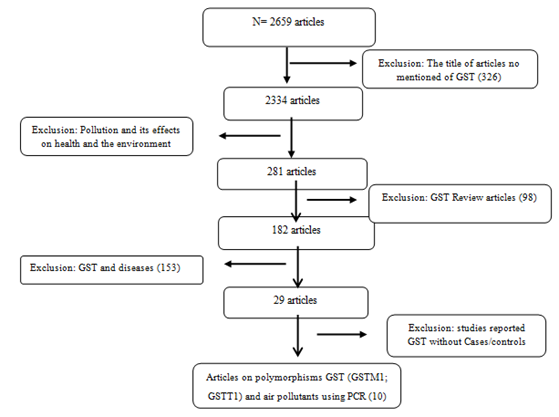
Figure 1: Flowchart describing the identification of articles included in this meta-analysis.
2.3 Statistical analyzes
The statistical test was performed by SPSS 20 statistical software. The t-test for paired samples was used to compare different variables of GSTM1 and GSTT1 null with controls with confidence interval (95% CI) and P-value. The graph of mustache box have illustrated the data.
4. Results
Ten (10) case/control articles were included in this meta-analysis [5, 20, 21-28]. For the analysis of the GSTM1 (null and present), the group of cases was about 44.32% versus 55.68% for the controls. For GSTT1 (null and present), 50% of cases were included as well as 50% of controls. These two genes were identified by the multiplex polymerase chain reaction (multiplex PCR) technique. The subjects included in these articles were exposed to various pollutants e.g. polycyclic aromatic hydrocarbons, nitric oxide, nitrogen dioxide, benzene, particulate matter, toluene, ethylbenzene and xylene. People of nine countries have participated to studies (Iran, Boston, India, Chine, Sweden, Barcelona, Turkey, Thailand and Denmark). These data are recorded in Table 1.
The whole cases and controls populations are exposed to a variety of air pollutants that have toxic effects to organisms, but these substances can induce diseases associated with a deletion of gene. In our meta-analysis, we selected some studies focusing on the relationship between GST gene polymorphism (GSTM1 and GSTT1) and air pollutants to assess potential mutation risks. This deletion can cause the alteration of several functions in the organism.
The prevalence of both genotypes varies among different studies. Priya and al in 2015 reported that the Indian population exposed to benzene had high level of null GSTM1 and GSTT1 genes. We observed a statistically significant difference for the two genes between cases versus controls (P-value= 0.006/0.01) [25]. In the same way, Zhang et al. showed a high level of GSTM1 and GSTT1 null genotype in Chinese population exposed to nitric oxide [23]. A difference statistically significant were also noticed between the two genes cases versus controls (P-value= 0.009/0.024). But the others studies showed no statistically significant difference between cases and controls in the deletion of GSTM1 and GSTT1.
The statistical analysis was performed with the T-test and the results of the studies on the effect of atmospheric pollutants on the GSTM1 at case/controls studies gave P-values ?0.05. Thus, a significant difference was observed between the cases with null genotype GSTM1 (-) and controls (OR=1.001; 95% CI=0.495-18.551; P=0.001). The Figures 2 and 3 show the difference on GSTM1 deletion.
The comparison with GSTT1 null in cases and controls was performed with the classical analysis (T-test). P-values were not significant at the cases level and controls as P=0.110. We also used the mustache box graph to illustrate the absence and presence of GSTT1 in cases and controls (Figures 4 and 5). There is a noticeable increase in the percentage of null GSTT1 genotype in the cases compared to controls but the difference was not statically significatif (IC 95% [-5,190_39,190] P-value= 0.110).
GST: Glutathion-S-Transferase; GSTM1: Glutathion-S-Transferase Mu 1; GSTT1: Glutathion-S-Transferase Theta 1; PCR: Polymerase chaine reaction
Table 1: Characteristics of the ten studies included in the Meta-Analysis.
|
N° |
Auteur |
Cas GSTM1 % |
Contrôle GSTM1 % |
||
|
(-) |
(+) |
(-) |
(+) |
||
|
1 |
Neghab et al. |
54.00 |
46.00 |
47.80 |
52.20 |
|
2 |
Zanobetti et al. |
53.24 |
46.73 |
52.42 |
47.58 |
|
3 |
Priya et al. |
46.00 |
54.00 |
20.00 |
80.00 |
|
4 |
Zhang et al. |
60.00 |
40.00 |
42.00 |
58.00 |
|
5 |
Castro et al. |
51.00 |
49.00 |
13.20 |
86.80 |
|
6 |
Ada et al. |
50.00 |
50.00 |
48.00 |
52.00 |
|
7 |
Pisani et al. |
59.64 |
40.36 |
63.60 |
36.40 |
|
8 |
Ntelsen et al. |
55.60 |
44.40 |
51.70 |
48.30 |
|
9 |
Lisbeth et al. |
57.00 |
43.00 |
53.00 |
47.00 |
Table 2: Genotypic prevalence of GSTM1 in selected articles.
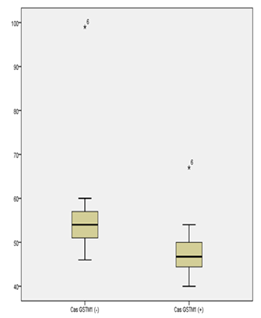
Figure 2: Results of the GSTM1 genotype of cases.
(-): Absence; (+): Presence
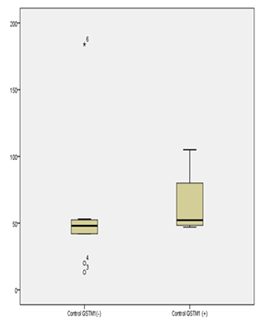
Figure 3: Results of the GSTM1 controls of genotype.
(-): Absence; (+): Presence
|
N° |
Auteurs |
Cas GSTT1 % |
Contrôle GSTT1 % |
||
|
(-) |
(+) |
(-) |
(+) |
||
|
1 |
Zhang et al. |
69.20 |
30.80 |
53.00 |
47.00 |
|
2 |
Castro-Giner et al. |
80.00 |
20.00 |
15.20 |
84.80 |
|
3 |
Priya et al. |
44.00 |
56.00 |
20.00 |
80.00 |
|
4 |
Levinsson et al. |
10.00 |
90.00 |
14.00 |
86.00 |
|
5 |
Ada et al. |
7.00 |
43.00 |
9.00 |
41.00 |
|
6 |
Zanobetti et al. |
19.77 |
80.23 |
20.20 |
79.80 |
|
7 |
Neghab et al. |
42.00 |
58.00 |
22.00 |
78.00 |
Table 3: Genotypic distribution of GSTT1 in selected articles.
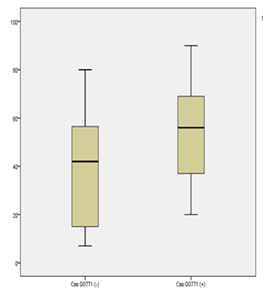
Figure 4: Results of the GSTT1 genotype of case.
(-): Absence; (+): Presence
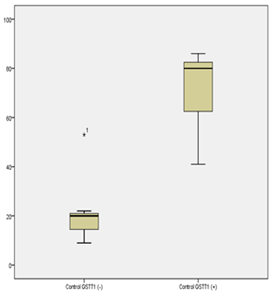
Figure 5: Results of the GSTT1 genotype of controls.
(-): Absence; (+): Presence
4. Discussion
Glutathione-S-transferases are a family of isoenzymes that play an important role in protecting the body against oxidative stress. Under aerobic conditions, some metabolites that have exogenous (atmospheric pollutants) and endogenous precursors (NADPH), generate Reactive Oxygen Species (ROS) as a normal physiological process [29, 30]. However, ROS could be neutralized with antioxidants. When ROS and antioxidant production were not balanced and ROS activity were the highest, GST activity is reduced. Excess of ROS can cause cell dysfunction which is responsible for the formation adducts observed on genetic material [6]. This meta-analysis tries to investigate the effects of atmospheric pollutants on glutathione-S-transferase polymorphisms (GSTM1 and GSTT1). Priya and al in 2015 and Zhang and al. in 2014 observed a statistically significant difference for the two genes between cases versus controls in Indian and Chinese populations [23, 25]. However others studies (07) reported in table 1 showed no difference in GSTM1 null and GSTT1 null polymorphism in cases control groups. This suggests that the deletion in GSTM1 and GSTT1 genes could depend on the nature of the pollutants as benzene and oxide nitric pollutants induced deletion with statistical significant difference between cases and controls while NO2, PM2.5, HAP and BTEX caused no significant difference. Neghab et al. work on BTEX shows that there is no significant difference between cases and control even though there is benzene in the pollutants [26]. We can then propose that the deletion of these genes depends on the study population as the BTEX data were conducted on Iran populations while the benzene effect were conducted on Indian populations. This idea is supported by several works that associate the deletion of these genes with respect to a disease in the Caucasian, American and African populations [10, 11, 31]. Even though we don't observe no significant difference between cases and controls, the deletion of GSTM1 and GSTT1 could also be associated with various pathologies as respiratory diseases such as asthma [32], chronic obstructive pulmonary disease [33], lung cancer [34], breast cancer [35], bladder cancer [36].
5. Conclusion
In sum, on 2659 articles consulted, only 10 were included in our meta-analysis on GST deletion in cases controls groups. Two of them showed statistically significant difference between cases and controls. The deletion of GST gene could depend on type of pollutants and population. We noticed that this study has some limitation as pollutant concentrations and the size of samples of cases controls group. Even with a non-significant difference in GST deletion, pathologies can develop within these populations. This can be explained by individual genetic susceptibility. It would be interesting to study this individual susceptibility according to the type of population and pollutants.
Author Contributions
All authors contributed to review of the literature, summarizing the results, conceptualization, and discussion as well as writing the manuscript.
Funding
This research received no external funding.
Acknowledgments
The authors thank Mr Hervé AGONSANOU and Professor CAPO-CHICHI Callinice for the proofreading in English.
Conflicts of Interest
The authors declare no conflict of interest.
References
- Daniel A Arber, Attilio Orazi, Robert Hasserjian, et al. The 2016 revision to the World Health Organization classification of myeloid neoplasms and acute leukemia 127 (2016): 2391-2405.
- Hayes JD, Strange RC. Glutathione S-transferase polymorphisms and their biological consequences. Pharmacology 61 (2000): 154-166.
- Gayan Bowatte, Caroline J Lodge, Grad DipEpi, et al. Traffic-related air pollution exposure is associated with allergic sensitization, asthma, and poor lung function in middle age. J Allergy Clin Immunol 139 (2017): 122-129.
- Nina Lazarevic, Annette J Dobson, Adrian G Barnett, et al. Long-term ambient air pollution exposure and self-reported morbidity in the Australian Longitudinal Study on Women's Health: a cross-sectional study. Occupational and environmental medicine 5 (2015).
- Ada AO, Kunak SC, Hancer F, et al. Association between GSTM1, GSTT1, and GSTP1 polymorphisms and lung cancer risk in a Turkish population. Mol Biol Rep 39 (2012): 5985-5993.
- Ayi Fanou L, Mobio TA, Creppy EE, et al. Survey of air pollution in Cotonou, Benin. Air monitoring and biomarkers. Sci Total Environ 358 (2006): 85-96.
- Tsuchida S, Yamada T. Glutathione transferases. ‘Reference module in biomedical sciences’, Elsevier (2014): 1-13.
- Bowatte G, Lodge CJ, Knibbs LD, et al. Traffic related air pollution and development and persistence of asthma and low lung function. Environ Int 113 (2018): 170-176.
- Ajith TA, Hema U, Aswathy MS. Zingiber officinale Roscoe prevents acetaminophen-induced acute hepatotoxicity by enhancing hepatic antioxidant status. Food and chemical toxicology: an international journal published for the British Industrial Biological Research Association 45 (2007): 2267-2272.
- Shijie Xu, Ying-Ping Wang, Bruce R, et al. Characterisation of human class mu GST gene cluster and the GSTM1 deletion. J bio Chem 273 (1998): 3517-3527.
- Luo W, Kinsey M, Schiffman JD, et al. Glutathione S-transferases in pediatric cancer. Front Oncol 1 (2011): 39-42.
- Da Fonseca RR, Johnson WE, O’Brien SJ, et al. Molecular evolution and the role of oxidative stress in the expansion and functional diversification of cytosolic glutathione transferases. Evol Biol 10 (2010): 281-291.
- Strange RC, Spiteri MA, Ramachandran S, et al. Glutathione-Stransferase family of enzymes. Mutat Res 482 (2001): 21-26.
- Hayes JD, Pulford DJ. The glutathione S-transferase supergene family: regulation of GST and the contribution of the isoenzymes to cancer chemoprotection and drug resistance. Crit Rev Biochem Mol Biol 30 (1995): 445-600.
- Hayes JD, Pulford DJ. The glutathione S-transferase supergene family regulation of GST and the contribution of the isoenzymes to cancer chemoprotection and drug resistance. Crit Rev Biochem Mol Biol 30 (1995): 445-600.
- Pemble S, Schroeder KR, Spencer SR, et al. Human glutathione-S-transferase theta (GSTT1): cDNA cloning and the characterization of a genetic polymorphism. Biochem J 300 (1994): 271-276.
- Kasthurinaidu KP, Ramasamy T, Ayyavoo J, et al. GST M1-T1 null Allele Frequency Patterns in Geographically Assorted Human Populations: A Phylogenetic Approach. PLOS one 10 (2015).
- Hidaka A, Sasazuki S, Matsuo K, et al. CYP1A1, GSTM1 and GSTT1 genetic polymorphisms and gastric cancer risk among Japanese: A nested case-control study within a large-scale population-based prospective study. Int J Cancer 139 (2016): 759-768.
- Chen ZH, Xian JF, Luo LP. Association between GSTM1, GSTT1, and GSTP1 polymorphisms and gastric cancer risk, and their interactions with environmental factors. Genetics and Molecular Research 16 (2017).
- Lisbeth E Knudsen, Hannu Norppa, Michael O Gamborg, et al. Chromosomal Aberrations in Humans Induced by Urban Air Pollution: Influence of DNA Repair and Polymorphisms of Glutathione S-Transferase M1 and N-Acetyltransferase 8 (1999): 303-310.
- Paola Pisani, Petcharin Srivatanakul, Juliette Randerson-Moor, et al. GSTM1 and CYP1A1 Polymorphisms, Tobacco, Air Pollution, and Lung Cancer: A Study in Rural Thailand. Cancer Epidemiol Biomarkers Prev 15 (2006): 667-674.
- Francesc Castro-Giner, Nino Künzli, Bénédicte Jacquemin, et al. Traffic-Related Air Pollution, Oxidative Stress Genes, and Asthma (ECHRS). Environ Health Perspect 117 (2009): 1919-1924.
- Hongyan Zhang, Xuwei Wu, Yi Xiao, et al. Genetic polymorphisms of glutathione S-transferase M1 and T1, and evaluation of oxidative stress in patients with non-small cell lung cancer. European Journal of Medical Research 19 (2014): 67.
- Levinsson A, Olin AC, Modig L, et al. Interaction Effects of Long-Term Air Pollution Exposure and Variants in the GSTP1, GSTT1 and GSTCD Genes on Risk of Acute Myocardial Infarction and Hypertension: A Case-Control Study. PLoS ONE 9 (2014): 99-143.
- Kanu Priya, Anita Yadav, Neeraj Kumar, et al. Glutathione S-Transferase Gene Polymorphisms: Modulator of Genetic Damage in Gasoline Pump Workers. International Journal of Toxicology 34 (2015): 500-504.
- Masoud NEGHAB, Ahmad MIRZAEI, Fatemeh KARGAR SHOUROKI, et al. Ventilatory disorders associated with occupational inhalation exposure to nitrogen trihydride (ammonia). Ind Health 56 (2018): 427-435.
- Antonella Zanobetti, Brent A Coull, Alexandros Gryparis, et al. Associations between arrhythmia episodes and temporally and spatially resolved black carbon and particulate matter in elderly patients. Occup Environ Med 71 (2014): 201-207.
- Per Sabro Nielsen, Nettie de Pater, Henrik Okkels, et al. Environmental air pollution and DNA adducts in Copenhagen bus drivers-Effect of GSTM1 and NAT2 genotypes on adduct levels. Cardnogenesis 17 (1996): 1021-1027.
- Bekris LM, Shephard C, Peterson M, et al. Glutathione-s-transferase M1 and T1 polymorphisms and associations with type 1 diabetes age-at-onset. Autoimmunity 38 (2005): 567-575.
- Baltmr A, Duggan J, Nizari S, et al. Neuroprotection in glaucoma-Is there a future role? Exp Eye Res 91 (2010): 554-566.
- Bentayeb M, Helmer C, Raherison C, et al. Bronchitis-like symptoms and proximity air pollution in French elderly. Respiratory Medicine 104 (2010): 880-888.
- Burbank AJ, Peden DB. Assessing the impact of air pollution on childhood asthma morbidity: how, when, and what to do. Curr Opin Allergy Clin Immunol 18 (2018): 124-131.
- Ramzi Lakhdar, Sabri Denden, Jalel Knani, et al. Association of GSTM1 and GSTT1 Polymorphisms with Chronic Obstructive Pulmonary Disease in a Tunisian Population. Biochem Genet 48 (2010): 647-657.
- Varvara I Minina, Olga A Soboleva, Andrey N Glushkov, et al. Polymorphisms of GSTM1, GSTT1, GSTP1 genes and chromosomal aberrations in lung cancer patients. J Cancer Res Clin Oncol 143 (2017): 2235-2243.
- Sharma RAVI, Raina Jyotdeep KOUR, Azad TARIQ, et al. GSTM1 gene polymorphisms and risk of breast cancer in J and K State. Journal of Genetics 9 (2017): 263-265.
- Srivastava DS, Kumar A, Mittal B, et al. GSTM1 and GSTT1 genes in bladder cancer: A study from North India. Archives of Toxicology 78 (2004): 430-434.


 Impact Factor: * 3.6
Impact Factor: * 3.6 Acceptance Rate: 76.49%
Acceptance Rate: 76.49%  Time to first decision: 10.4 days
Time to first decision: 10.4 days  Time from article received to acceptance: 2-3 weeks
Time from article received to acceptance: 2-3 weeks 